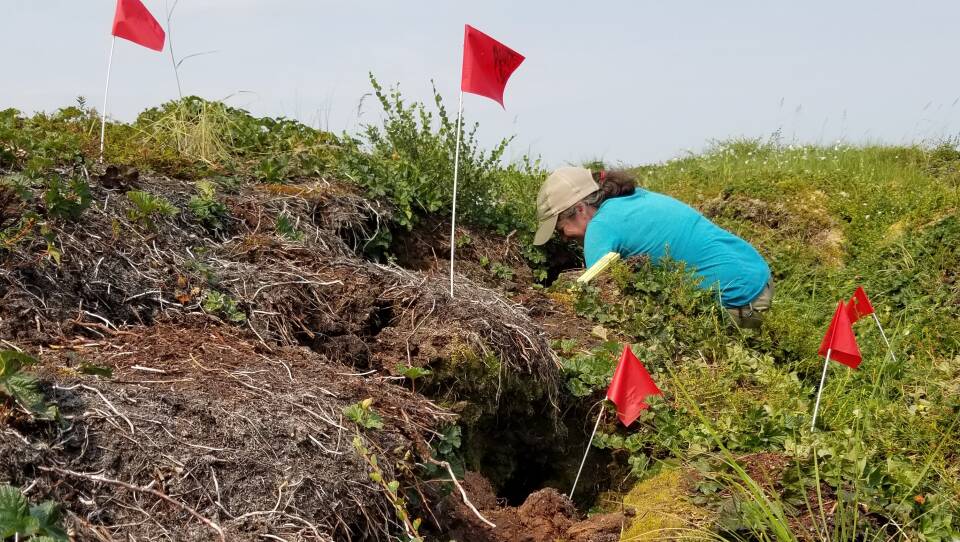Extreme heat in Europe and in the continental U.S. has gotten a lot of attention this summer. What you may not have heard about is what’s been happening in Alaska — 90 degree temperatures in the arctic, wildfires, rare lightning storms, and the ground collapsing due to the melting of permafrost.
A team of scientists and students with Woods Hole Research Center’s Polaris Project are just back from a trip to the Yukon Kuskokwim Delta to study climate impacts. Lead scientist Sue Natali says she’s never seen anything like it in her years of Arctic research, and warns that it is a sign of abrupt and accelerating climate change.
As part of their research, Natali and her team installed temperature sensors down to a meter at what should have been permafrost. What they discovered was thawing, which in turn created ground collapse at a level she’d never seen before.
So is this just one extreme year, or is this the result of climate change?
“It's definitely climate change,” Natali said. “It's accelerating, and the past couple years have been particularly bad. The past winters have been warm. There has been rain when there should be snow, the ground hasn't been frozen in this area." And, she added, "the ground surface didn't freeze until mid-January this year.”
In addition to being unsafe, ground collapse also emits more methane.
“In undisturbed tundra, we have never seen nitrous oxide emissions, or nitrous oxide, another greenhouse gas. It's more than 100 times more potent than carbon dioxide,” Natali said.
She and her team are gathering and processing information, but there’s still a lot of unknowns. The changes are happening at a fast rate, but it’s proving difficult to put into a model.
“I would say we're being quite conservative when we make our estimates about how much carbon will be released from thawing permafrost because of these surprising events,” Natali said.
Natali estimates that about 150 billion tons of carbon will be released from thawing permafrost by the end of the century if we continue to re-emit fossil fuel emissions at the current rate. That's on-par with how much carbon the U.S. will emit over the same period.
But, she says, if we control warming from fossil fuels, we can control the release from permafrost thawing.
"It's not a hopeless case," she said. If the world greatly reduces carbon emissions, it's possible to keep 70 percent of permafrost instead of losing 70 percent, Natali said.
As part of her research, Natali speaks with Native Alaskans. She says they're dealing with the changes by working with each other, and by working with scientists.
But there's only so much people can do. The problems that are happening in the Arctic are globally caused, “and I think there should be global support,” Natali said.





